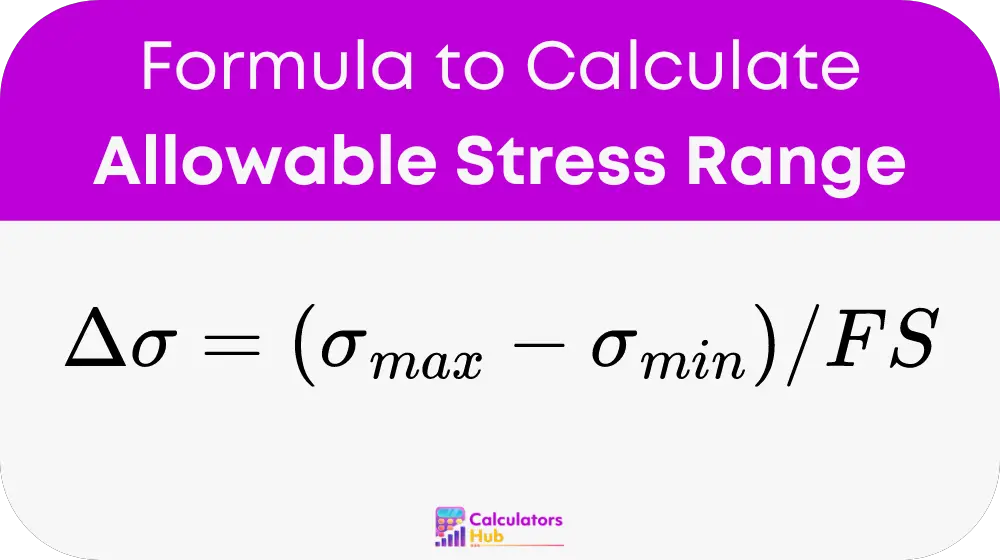The Allowable Stress Range Calculator is a critical tool used by engineers and designers to determine the permissible stress variations a material can withstand under cyclic loading conditions without failing. This is particularly important in the context of fatigue analysis where materials are subjected to repeated stress cycles over time. Understanding the allowable stress range helps in designing safer, more reliable structures and components, especially in industries such as aerospace, automotive, and civil engineering.
Formula of Allowable Stress Range Calculator
The formula to calculate the allowable stress range (Δσ) for materials subjected to cyclic loading is:

Where:
- Δσ is the allowable stress range.
- σ_max is the maximum stress in the cycle.
- σ_min is the minimum stress in the cycle.
- FS is the factor of safety.
Detailed Calculation Steps:
- Determine Maximum Stress (σ_max):
- Measure or calculate the maximum stress experienced by the material during the loading cycle.
- Determine Minimum Stress (σ_min):
- Measure or calculate the minimum stress experienced by the material during the loading cycle.
- Determine Factor of Safety (FS):
- Choose an appropriate factor of safety based on material properties, application, and design standards.
- Substitute Values into the Formula:
- Δσ = (σ_max - σ_min) / FS
Table of Stress Factors
This table provides a quick reference for engineers to understand and utilize common stress factors without needing to calculate each time:
| Stress Type | Description | Typical Values or Importance |
|---|---|---|
| Maximum Stress (σ_max) | The highest stress a material undergoes in a cycle. | Depends on material and load. |
| Minimum Stress (σ_min) | The lowest stress a material undergoes in a cycle. | Depends on material and load. |
| Factor of Safety (FS) | Safety multiplier to ensure durability under unexpected loads. | Typically ranges from 1.5 to 3.0 |
Example of Allowable Stress Range Calculator
Consider a beam in a bridge that undergoes cyclic loading due to traffic. Assume the maximum stress experienced by the beam is 120 MPa and the minimum stress is 20 MPa, with a factor of safety of 2.
Allowable Stress Range Calculation: Δσ = (120 MPa - 20 MPa) / 2 = 50 MPa
This calculation shows that the beam can safely handle a stress range of 50 MPa considering cyclic loading conditions.
Most Common FAQs
The factor of safety is crucial as it provides a safety margin, accommodating uncertainties in load estimations, material defects, and future degradation.
Yes, but the specific parameters like maximum and minimum stresses, as well as the factor of safety, need to be adjusted based on the material's properties and the specific application's requirements.
Cyclic loading can lead to material fatigue over time as the repeated application of stress can cause microscopic cracks to develop and grow, potentially leading to failure if not properly managed.